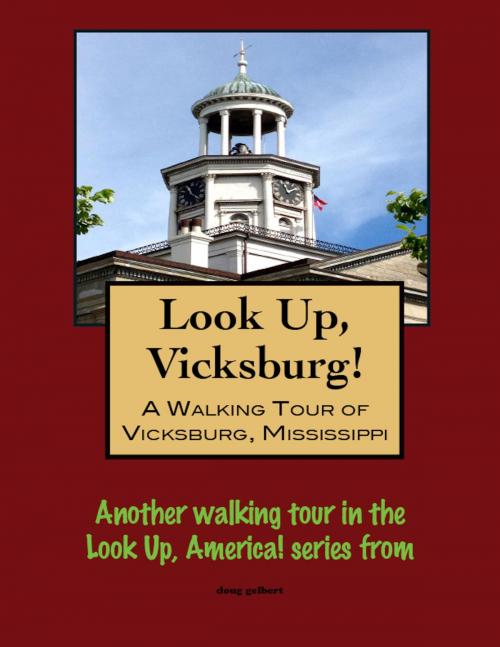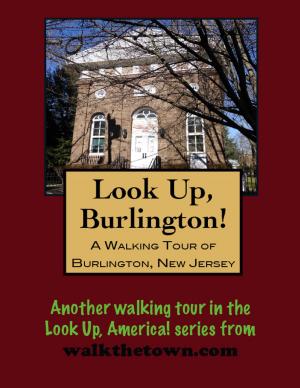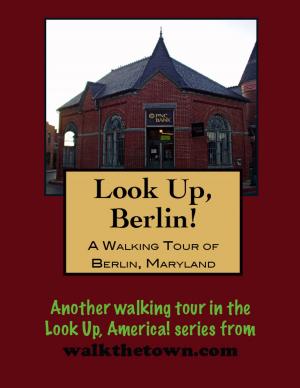| Author: | Doug Gelbert | ISBN: | 9781301370948 |
| Publisher: | Doug Gelbert | Publication: | June 27, 2013 |
| Imprint: | Smashwords Edition | Language: | English |
| Author: | Doug Gelbert |
| ISBN: | 9781301370948 |
| Publisher: | Doug Gelbert |
| Publication: | June 27, 2013 |
| Imprint: | Smashwords Edition |
| Language: | English |
There is no better way to see America than on foot. And there is no better way to appreciate what you are looking at than with a walking tour. Whether you are preparing for a road trip or just out to look at your own town in a new way, a downloadable walking tour from walkthetown.com is ready to explore when you are.
Each walking tour describes historical and architectural landmarks and provides pictures to help out when those pesky street addresses are missing. Every tour also includes a quick primer on identifying architectural styles seen on American streets.
Newitt Vick was a Methodist minister from Virginia who established one of the first missions in Mississippi in 1814 on land he purchased from the government about six miles east of the the current townsite. While tending to converts Vick also had an eye for business, especially as the nation’s richest cotton-growing lands were being developed around him. He bought up land around the confluence of the Yazoo and Mississippi rivers and sketched out plans for a port city. An outbreak of yellow fever claimed both Vick and his wife in 1819 but a son-in-law, John Lane took the plans, sold lots to pay Vick debts and by 1825 had launched a thriving village that was named in the minister’s honor.
Vicksburg was very quickly a bustling port town. In addition to the trade arriving across the docks there were two soap factories, sawmills, carriage and wagon works, and a hospital in town in short order. By 1860 there were five churches, four fire companies and three newspapers in town. When the Civil War erupted Vicksburg was recognized on both sides as “the Gibraltar of the Confederacy.” it took more than a year of military operations and one of the greatest strategic campaigns in American military history, culminating in a six-week siege, to drive the rebels from their fortress of a town. The Vicksburg Campaign made the career of General Ulysses S. Grant and doomed the Confederacy when General John Clifford Pemberton surrendered the town on July 4, 1863.
When the war ended the Vicksburg economy was crippled and much of its building stock damaged or destroyed. Reconstruction in the years following the war did not bring immediate relief. Even the Mississippi River turned against Vicksburg when it cut a new channel and abandoned the waterfront in 1876.
Things began to turn around for Mississippi’s largest city in the 1880s. The Yazoo and Mississippi Valley Railroad arrived in 1884, steamboats filled the Mississippi River and a streetcar system was initiated. The Mississippi River was even brought back by the United States Corps of Engineers with a diversion canal in the Yazoo River.
The boom years subsided after 1910 with the disappearance of the steamboat trade. The population in Vicksburg has changed little in the past 100 years, even as the streetscape has been altered regularly. The town grew up around Main Street but after a fire in 1839 the commercial district shifted down to Washington Street, parallel to the water. Fires visited the downtown area regularly in 1846, 2885, 1910 and 1939, consuming entire blocks. A December 5, 1953 tornado crashed through the business district taking with it numerous long-standing properties in town.
In the 1970s Vicksburg was an active player in urban renewal, pulling down hundreds of buildings. Entire blocks were lost and many buildings left standing picked up unfortunate modern facelifts. Our walking tour to seek out what remains of the character of the historic river town will start, naturally, enough, down by the water...
There is no better way to see America than on foot. And there is no better way to appreciate what you are looking at than with a walking tour. Whether you are preparing for a road trip or just out to look at your own town in a new way, a downloadable walking tour from walkthetown.com is ready to explore when you are.
Each walking tour describes historical and architectural landmarks and provides pictures to help out when those pesky street addresses are missing. Every tour also includes a quick primer on identifying architectural styles seen on American streets.
Newitt Vick was a Methodist minister from Virginia who established one of the first missions in Mississippi in 1814 on land he purchased from the government about six miles east of the the current townsite. While tending to converts Vick also had an eye for business, especially as the nation’s richest cotton-growing lands were being developed around him. He bought up land around the confluence of the Yazoo and Mississippi rivers and sketched out plans for a port city. An outbreak of yellow fever claimed both Vick and his wife in 1819 but a son-in-law, John Lane took the plans, sold lots to pay Vick debts and by 1825 had launched a thriving village that was named in the minister’s honor.
Vicksburg was very quickly a bustling port town. In addition to the trade arriving across the docks there were two soap factories, sawmills, carriage and wagon works, and a hospital in town in short order. By 1860 there were five churches, four fire companies and three newspapers in town. When the Civil War erupted Vicksburg was recognized on both sides as “the Gibraltar of the Confederacy.” it took more than a year of military operations and one of the greatest strategic campaigns in American military history, culminating in a six-week siege, to drive the rebels from their fortress of a town. The Vicksburg Campaign made the career of General Ulysses S. Grant and doomed the Confederacy when General John Clifford Pemberton surrendered the town on July 4, 1863.
When the war ended the Vicksburg economy was crippled and much of its building stock damaged or destroyed. Reconstruction in the years following the war did not bring immediate relief. Even the Mississippi River turned against Vicksburg when it cut a new channel and abandoned the waterfront in 1876.
Things began to turn around for Mississippi’s largest city in the 1880s. The Yazoo and Mississippi Valley Railroad arrived in 1884, steamboats filled the Mississippi River and a streetcar system was initiated. The Mississippi River was even brought back by the United States Corps of Engineers with a diversion canal in the Yazoo River.
The boom years subsided after 1910 with the disappearance of the steamboat trade. The population in Vicksburg has changed little in the past 100 years, even as the streetscape has been altered regularly. The town grew up around Main Street but after a fire in 1839 the commercial district shifted down to Washington Street, parallel to the water. Fires visited the downtown area regularly in 1846, 2885, 1910 and 1939, consuming entire blocks. A December 5, 1953 tornado crashed through the business district taking with it numerous long-standing properties in town.
In the 1970s Vicksburg was an active player in urban renewal, pulling down hundreds of buildings. Entire blocks were lost and many buildings left standing picked up unfortunate modern facelifts. Our walking tour to seek out what remains of the character of the historic river town will start, naturally, enough, down by the water...















